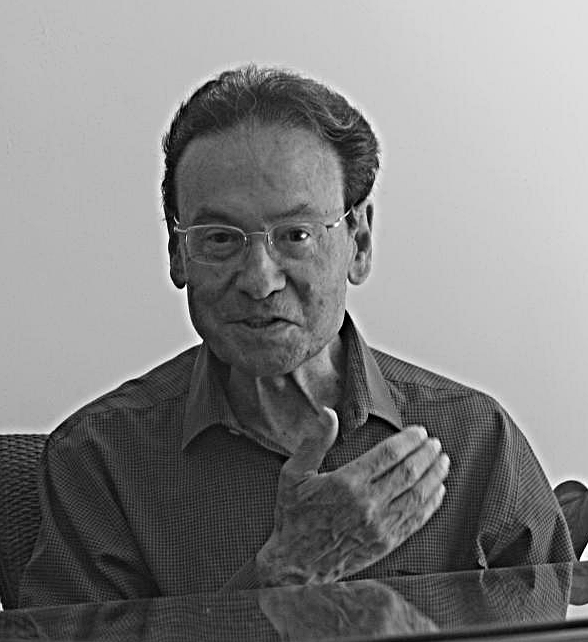Complexity in the tensive hypothesis of Claude Zilberberg
DOI:
https://doi.org/10.11606/issn.1980-4016.esse.2019.154030Keywords:
Tensivity, Complexity, Difference, IntensificationAbstract
Complexity occupies a prominent place in the tensive hypothesis formulated by Claude Zilberberg. The focus of this article is to promote, as a tribute, a reflection on the theoretical treatment given by him to this phenomenon. Zilberberg (2010, 2011a) assumes a "development complexity" that allows the coexistence or "collaboration" between discrete and gradual units and that maintains the theoretical coherence of the concept of tensiveness in the semiotic description. Despite being a conciliatory position, this theoretical movement represents for many the passage from a semiotics of difference to a semiotics of interval. However, it should be noted that the coexistence of magnitudes should not imply exactly graded operations in the description of the sensible, let alone the subordination of the operations opposed to those considered scalar, as some interpretations of tensive semiotics suggest. Zilberberg’s theoretical formulations allow us to think of a simulation of graduality through a complexification of the discontinuous dimension, in which certain analytic operations dilute the boundaries between the discrete units, without, however, eliminating them completely. It is, in our opinion, a gradation of difference, by another differential operation, of a metalinguistic order. With the adoption of this view, complexity would not give rise to any substantialist or ontologizing interpretation and would gain epistemological status as an instance of mediation between semiotic approaches that direct their attention to the dimension of both the continuous and the discontinuous perspectives. Moreover, the postulate of difference, a sine qua non of scientific intelligibility, remains intact in the description of affections by the bias of tensivity.
Downloads
References
BEIVIDAS, Waldir. A semiótica tensiva: uma teoria imanente dos afetos. CASA: Cadernos de Semiótica Aplicada, v. 13, n. 1, p. 43-86, 2015.
BLANCHÉ, Robert. Estruturas intelectuais: ensaio sobre a organização sistemática dos conceitos. São Paulo: Perspectiva, 2012.
DELEUZE, Gilles. Diferença e repetição. Tradução: Luiz Orlandi e Roberto Machado. Rio de Janeiro: Graal, 1988.
DELEUZE, Gilles. Francis Bacon: lógica da sensação. Tradução Roberto Machado et al. Rio de Janeiro: Jorge Zahar Ed., 2007.
FONTANILLE, Jacques; ZILBERBERG, Claude. Tensão e significação. Tradução de Ivã Carlos Lopes, Luiz Tatit e Waldir Beividas. São Paulo: Humanitas, 2001.
GREIMAS, Algirdas Julien. Semântica estrutural: pesquisa de método. Tradução Haquira Osakabe e Izidoro Blikstein. São Paulo: Cultrix, 1973.
GREIMAS, Algirdas Julien. Entretien avec A. J. Greimas sur les structures élémentaires de la signification. In: F. Nef, Structures élémentaires de la signification. Bruxelles: Éditions Complexe, 1976. P. 18-26.
GREIMAS, Algirdas Julien; COURTÉS, Joseph. Dicionário de semiótica. São Paulo: Contexto, 2008.
GREIMAS, Algirdas Julien. Da Imperfeição. Tradução Ana Cláudia de Oliveira. São Paulo: Hacker Editores, 2002.
GREIMAS, Algirdas Julien; FONTANILLE, Jacques. Semiótica das paixões: dos estados de coisas aos estados de alma. Tradução Maria José Rodrigues Coracini. São Paulo: Ática, 1993.
HJELMSLEV, Louis. Prolegômenos a uma teoria da linguagem. Tradução J. Teixeira Coelho Netto. São Paulo: Perspectiva. 1975.
HOUAISS, Antônio. Dicionário eletrônico Houaiss da língua portuguesa. São Paulo: Objetiva, 2009.
LEITE, Ricardo Lopes. Saussure e a sílaba. Matraga. Rio de Janeiro. v. 34, p. 90-101, 2014.
LEITE, Ricardo Lopes. Transposição e narratividade nos desenvolvimentos da semiótica atual. Estudos Semióticos [on-line], volume 13, n. 2 (edição especial). Editores convidados: Waldir Beividas e Eliane Soares de Lima. São Paulo, dezembro de 2017, p. 51-58. Disponível em: www.revistas.usp.br/esse. Acesso em 14/01/2019.
SARAIVA, José Américo Bezerra. Análise da análise: quadrado semiótico e gráfico tensivo. Estudos Semióticos [on-line], volume 13, n. 2 (edição especial), 2017, p. 77-87. Disponível em: www.revistas.usp.br/esse. Acesso em 14/01/2019.
SAUSSURE, Ferdinand de. Curso de linguística geral. São Paulo: Cultrix, s/d.
VALÉRY, Paul. Cahiers. Tome II. Paris : Gallimard, 1988.
ZILBERBERG. Claude. Essai sur les modalités tensives. Amsterdam: John Benjamins, 1981.
ZILBERBERG, Claude. Síntese da gramática tensiva. Significação: Revista De Cultura Audiovisual, 33(25), 2006. p. 163-204.
ZILBERBERG, Claude. Observações sobre a base tensiva do ritmo. Tradução Lucia Teixeira e Ivã Carlos Lopes. Estudos Semióticos [on-line], volume 6, n. 2, 2010. Disponível em:http://www.revistas.usp.br/esse .
ZILBERBERG, Claude. Elementos de semiótica tensiva. Tradução Ivã Carlos Lopes, Luiz Tatit e Waldir Beividas. São Paulo: Ateliê Editorial, 2011a.
ZILBERBERG, Claude. Philosophie et sémiotique. Cassirer, Merleau-Ponty, Deleuze. Estudos Semióticos [on-line], volume 7, n. 2, 2011b. p. 1-7. EditoresResponsáveis: Francisco E. S. Merçon e Mariana Luz P. de Barros. Disponível em:http://www.revistas.usp.br/esse. Acesso em 12/01/2019.
Downloads
Published
Issue
Section
License
Copyright (c) 2019 Ricardo Lopes Leite

This work is licensed under a Creative Commons Attribution-NonCommercial-ShareAlike 4.0 International License.
The authors grant the journal all copyrights relating to the work published. The concepts expressed in signed articles are absolute and exclusive responsibility of their authors.






